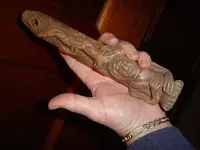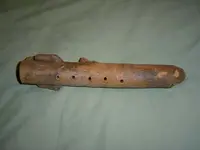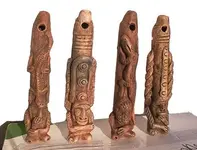Since the early 1900s, the
University of Pennsylvania Museum of Archaeology and
Anthropology has been a leader in research on the ancient
Maya and other peoples who lived in the area often referred
to as "Mesoamerica"--encompassing Mexico, Guatemala, Belize,
El Salvador and parts of Honduras, Nicaragua and Costa Rica.
West Mexican shaman figurines of clay, a ceramic Aztec flute, and a
nearly 3000-year-old miniature jade were-jaguar mask of the
Olmec people, are some of the objects which introduce
visitors to Mesoamerican religion, rich in rituals that
included blood sacrifice, the burning of incense, music and
dance. For ancient Mesoamericans all things had a life
force, ancestors and gods could and would be invoked to help
the living, and shamans could transform into animals like
the powerful jaguar and communicate directly with gods.
http://www.upennmuseum.com/pressreleases/forum.pl?msg=55




 ?
?



